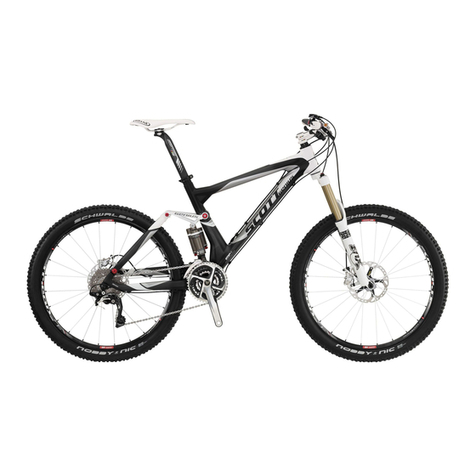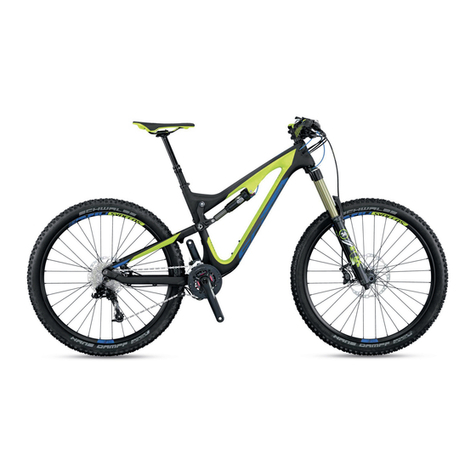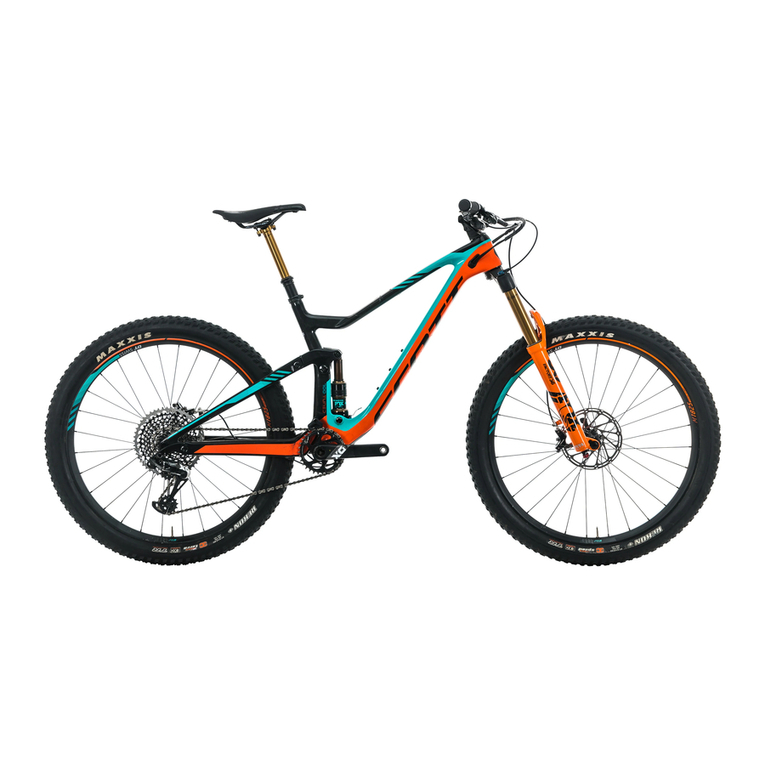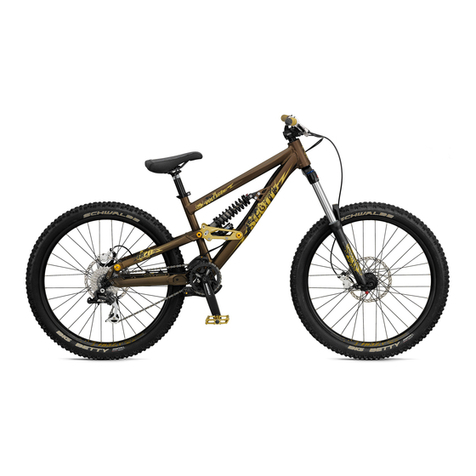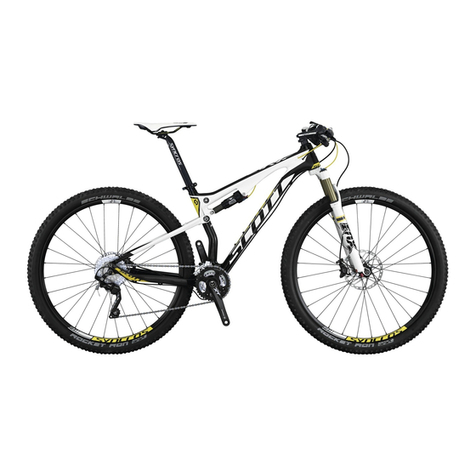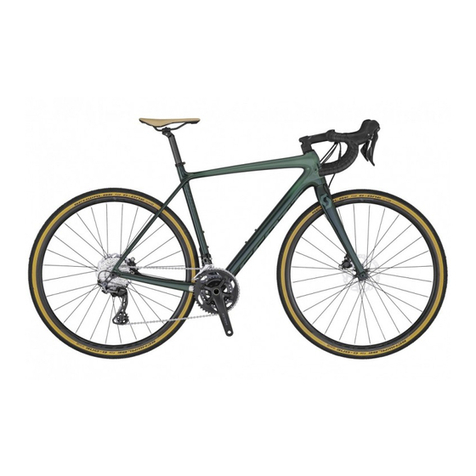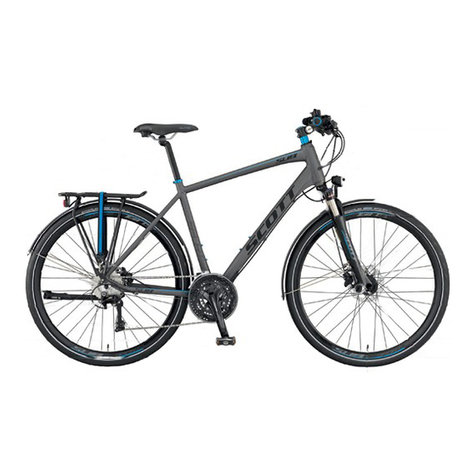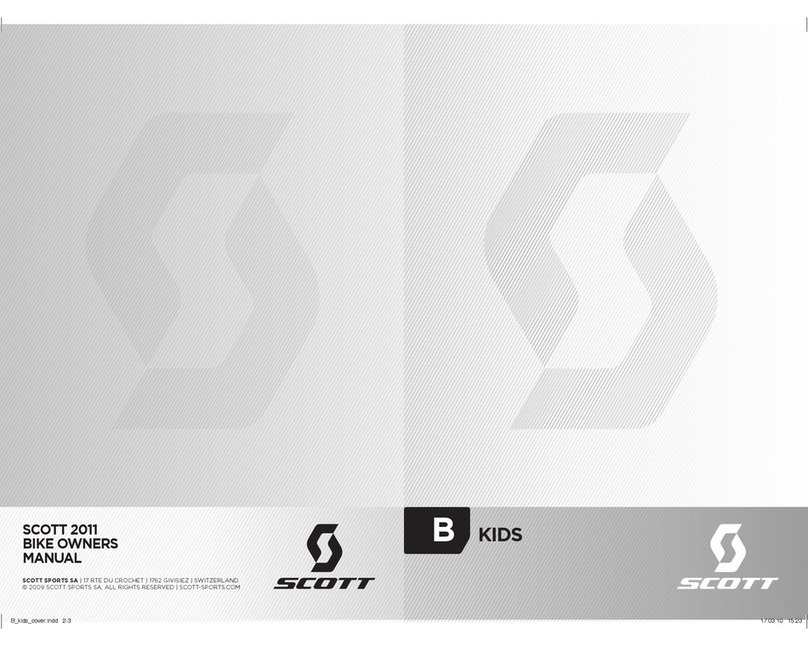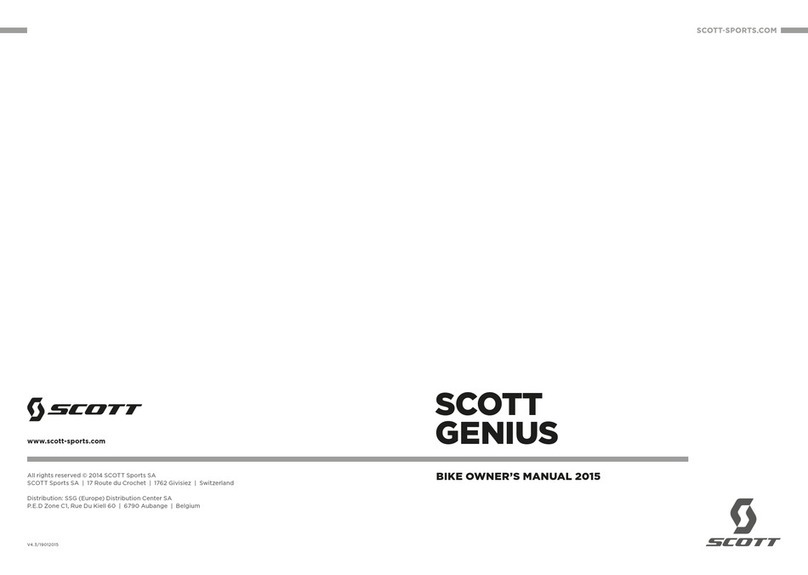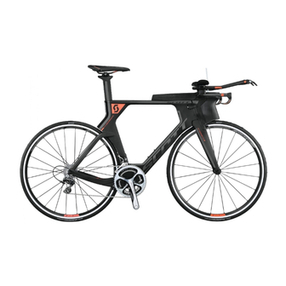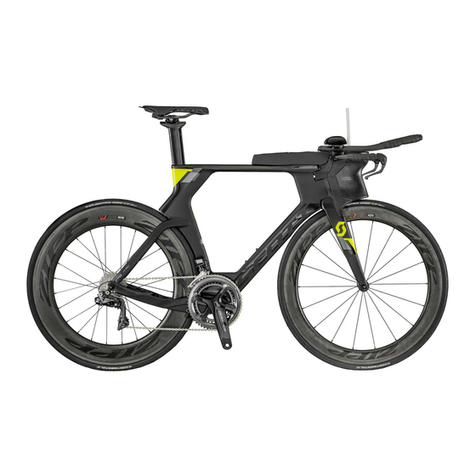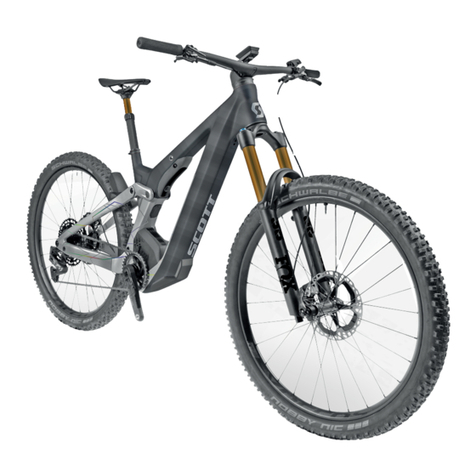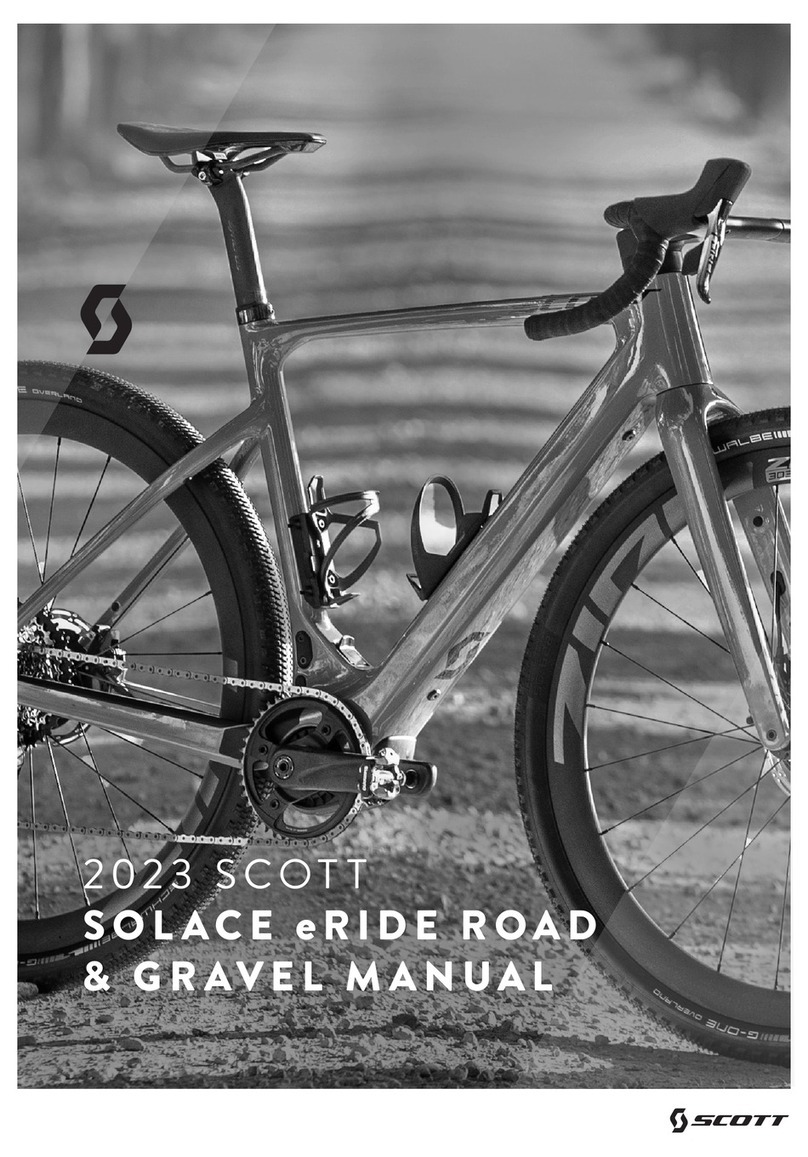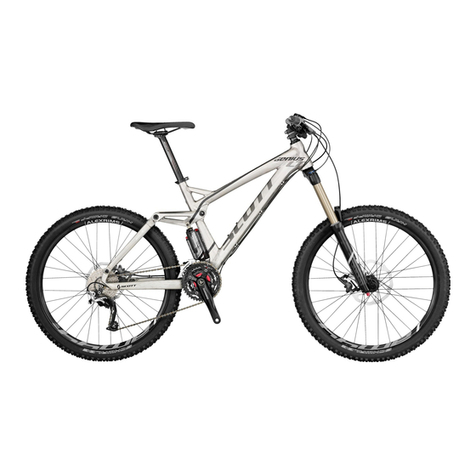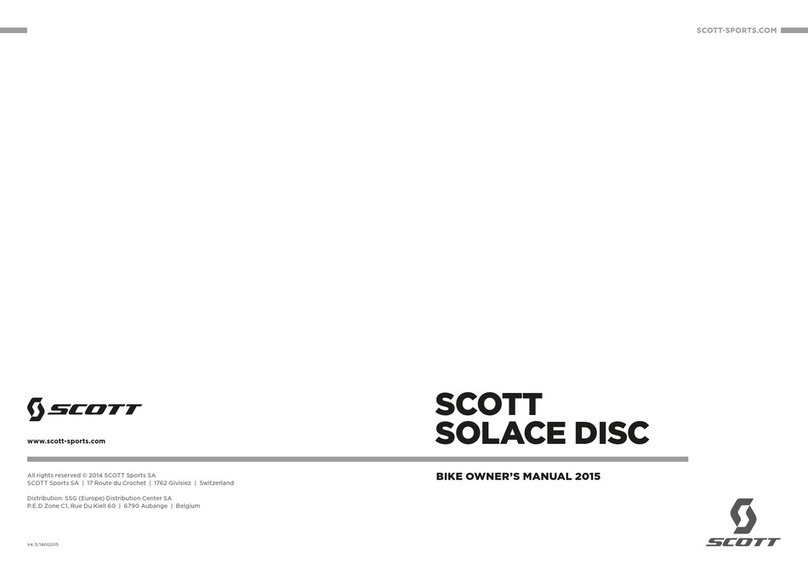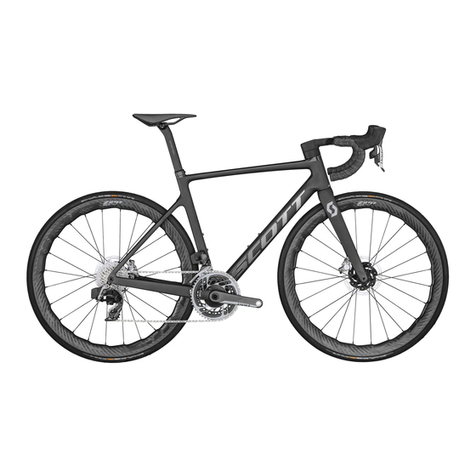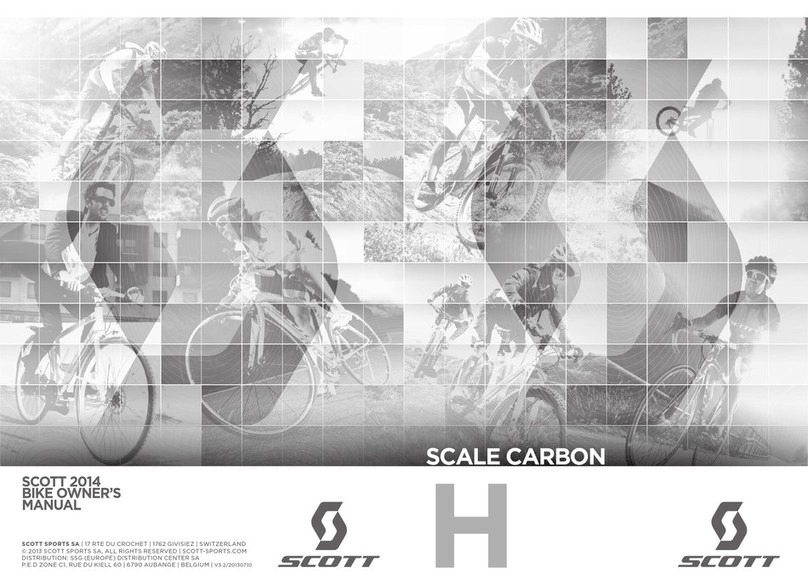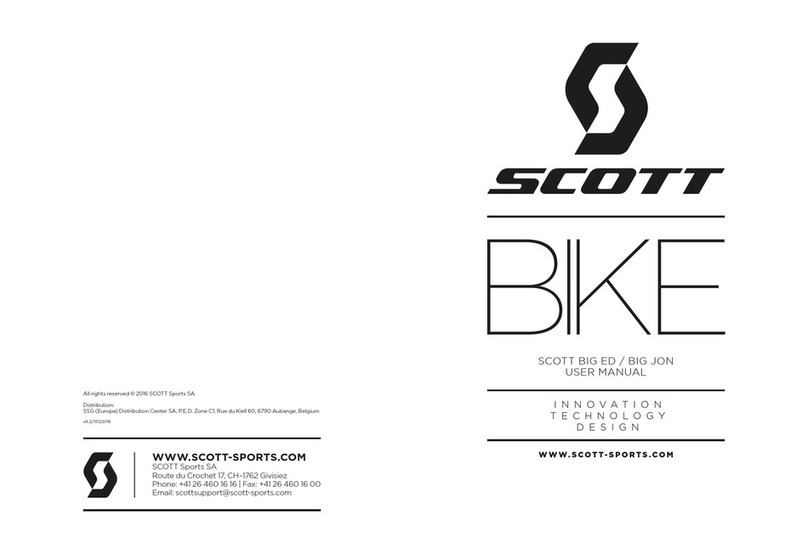OWNER MANUAL
1. Obey all traffic laws,
2. Make sure that the bike size is right for the rider,
and that he can reach brake levers properly,
3. Make sure that the brakes and the bicycle work
perfectly well (cf maintenance),
4. Always have a light at night and install reflectors
properly,
5. Never ride two people on a bicycle designed for
one (except specially designed and properly instal
led child carriers.),
6. Never hitch a ride on another vehicle,
7. Do not weave or race in traffic,
8. Watch out for parked cars (door can be opened at
any time) and cars pulling into traffic,
9. Use proper signals when turning,
10. Mount loads securely. Never carry packages that
interfere with brakes or vision,
11. Always wear a helmet.
Congratulations on your purchase of a new SCOTT
bicycle! We are confident that the bicycle will exceed
your expectations for value, performance, and ride qua-
lity. Each frame set and component has been custom
specified and designed to enhance your riding experien-
ce. Whether you are a beginning cyclist, or a seasoned
pro. SCOTT bicycles will provide endless hours of two-
wheeled fun.
We strongly encourage you to take the time to read this
manual and familiarise yourself with your new bicycle.
If you have purchased a bike for your children, please
take the time to make sure they understand the infor-
mation contained in this Owner’s Manual.
Important!
If you purchased this bicycle for a minor, it is essential
that a responsible adult/parent thoroughly reviews and
reads the Owner’s Manual to the minor.
It is important to understand the basics of riding a
bicycle, but it is equally important to exercise common
sense when cycling. Cycling is a dynamic sport and
requires reacting to varying situations. Like any sports,
cycling involves risk of injury and damage. By choosing
to ride a bicycle, you assume the responsibility for that
risk.
If you have questions or problems regarding your new
SCOTT bicycle, please contact your Authorised Dealer.
Ride Frequently!
Congratulations! Bicycle safety
